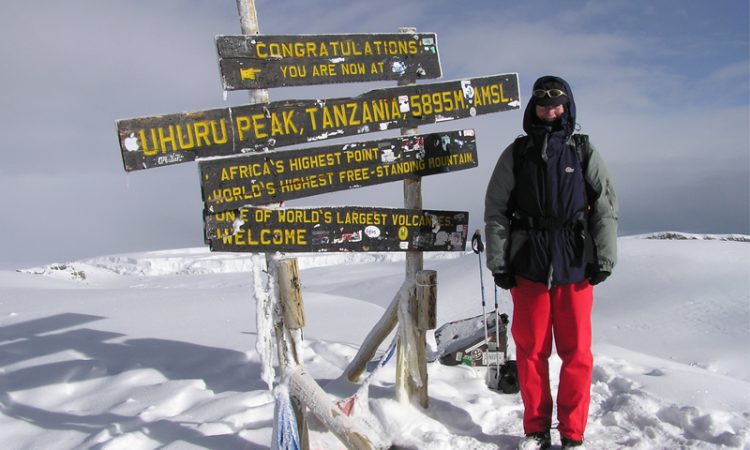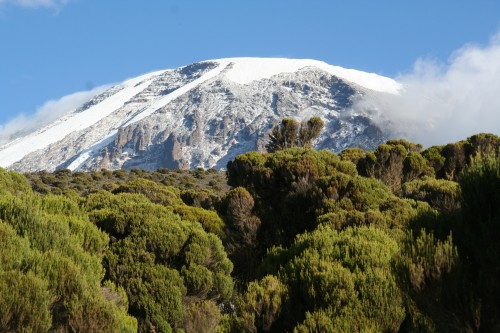
Enjoy The Spectacular Snow On Tanzania’s Mount Kilimanjaro
Enjoy The Spectacular Snow On Tanzania’s Mount Kilimanjaro: Why is Kilimanjaro Mountain so famous? The 5895-meter-tall Kilimanjaro in Tanzania, the highest peak in Africa, is the world’s tallest freestanding mountain and dominates the landscape unlike any other mountain. Mawenzi, Shira, and Kibo are the three volcanic cones found on Kilimanjaro. The highest mountain, Kibo, remains dormant and has the potential to erupt again, while Mawenzi and Shira are extinct.
Kilimanjaro national park Tanzania is a formidable endeavor that is completely doable for the adventurous traveler or ardent walker seeking something new. Visitors will ascend Mount Kilimanjaro in a matter of days from the hot African plains via grasslands, tropical rain forests, alpine meadows, moorlands, and desert uplands onto snow and ice.
One of life’s great Tanzania safari experiences is to be in its presence, whether close or distant, and to witness the magnificence of its enormous dome soar so far above the surrounding plains. You can’t help not to be deeply humbled by its utter magnificence as you gaze upon it in wonder and amazement. It makes sense why so many tourists want to go there, stay there, love it, and climb it.
It is a volcano that rises on its own from a vast expanse of level plains and rolling hills. As measured from the surrounding plains to its summit, this makes it the tallest peak in the entire planet.
Climbing Mount Kilimanjaro
How long does it take to climb Mount Kilimanjaro?
To ascend to the summit of Mount Kilimanjaro and subsequently descend to the destination, it takes five to nine days. Your chances of reaching the top of Mount Kilimanjaro increase with each day spent climbing since you will grow more acclimated to the altitude and experience less exhaustion.
Can a normal person or a beginner climb Mount Kilimanjaro?
But the ability to successfully ascend Kilimanjaro is unquestionably accessible for the normal individual. You don’t need to have technical climbing skills, and you don’t need to be especially fit (in fact, being too fit can be harmful).
As Tanzania safari experts we regularly climb four of the main routes on Mount Kilimanjaro national park:
One of the favored route up Mount Kilimanjaro is the Machame path, which takes seven days and provides superb scenery and acclimatization.
After the second camp (Shira Plateau), the Lemosho route and the Machame route are identical, however the Lemosho route allows for an additional day on the mountain.

Alternately, there is the less popular Rongai route, which descends the mountain from the north. It’s advantageous in the rainy season as well because it’s more protected.
Alternatively, Tanzania safaris can offer climbs via the nine-day Northern Circuit route for those with a little more time.
Is it hard to climb Mount Kilimanjaro?
The climb to the top of Mount Kilimanjaro is somewhat challenging. On Kilimanjaro national park, the landscape changes over the course of seven or eight days, and the difficulty of the days fluctuates as well. Travelers are climbing the mountain over a distance of around 38 miles, rising from 2000 meters to 5895 meters before descending. Along the way, one will pass through farmed farmland, equatorial forest, alpine heath, a lunar-like volcanic desert, and a glaciated summit. There are no treacherous drops along the way, no rock climbing or specialized equipment is required, but it is still quite high. Additionally, a visitor’s body may tire due to the weather and temperature variations.
The pathways are in good shape and have been well traveled; some are steeper than others, but it is evident that they all become more difficult as you ascend. A traveler need more calories for the energy required, one can experience panting more frequently, muscles may feel more exhausted from working in an atmosphere with less oxygen, and the combination of the scorching sun and the freezing nights may exhaust visitors as well. The key is to take it easy, eat well, drink a lot, and sleep well. Although it seems simple, many individuals lose their appetite, forget to drink their recommended three liters of water each day, discover that they don’t sleep as deeply at altitude, and frequently try to move too quickly. Most often, a guide’s task is to continuously advise individuals on these four fundamental principles in order to give them the chance of getting up and down easily.
A climb up Mount Kilimanjaro—whose name means “mountain of the springs”—offers the chance to see five diverse habitats from bottom to summit because to exceptional Mount Kilimanjaro national park location just below the equator. You may ascend Kilimanjaro national park in a matter of days, passing through grasslands, tropical rainforests, alpine meadows, moorlands, and desert uplands before reaching snow and ice.
A climb up Mount Kilimanjaro during the full moon
A hike up Kilimanjaro during a full moon, or even a young moon, is frequently very crowded. Since Kilimanjaro national park location is on the equator, summit night can be spent hiking in the light of a full silvery moon so that you don’t even need a headlamp. It can also be spent hiking under a full sky of both north and south stars because Mount Kilimanjaro national park is located on the equator. In fact, the Southern Cross and the North Star can both be seen in the same sky from a high vantage point on the mountain. Visitors are advised to offset their summit night if they wish to avoid the busiest nights on a full moon. Without a certain, there are times when a lot of people leave camp, making the summit route very busy.


